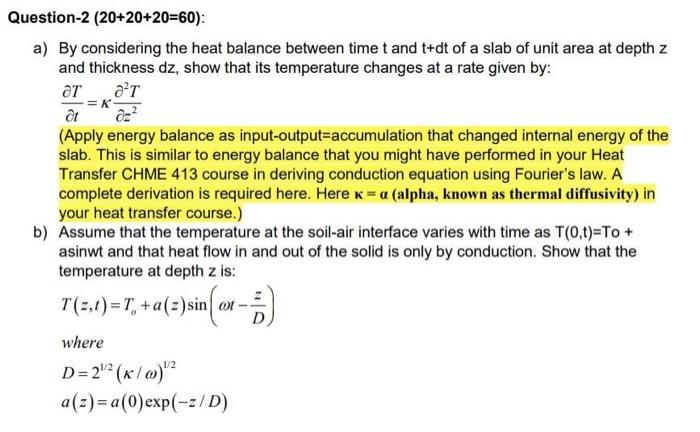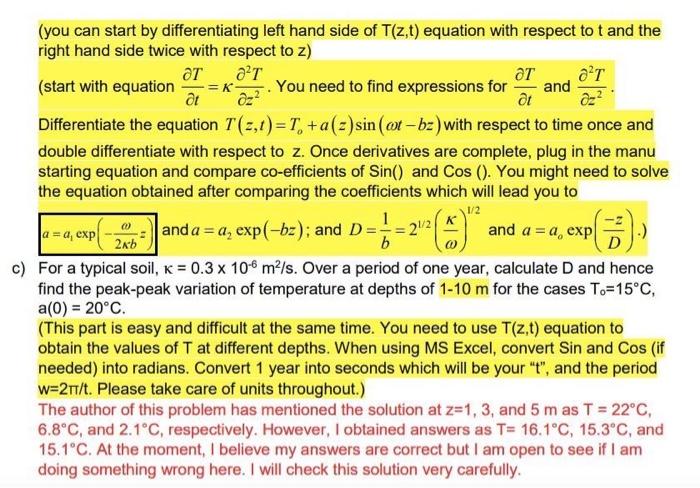=K Question-2 (20+20+20=60): a) By considering the heat balance between time t and t+dt of a slab of unit area at depth z and thickness dz, show that its temperature changes at a rate given by: at at (Apply energy balance as input-output=accumulation that changed internal energy of the slab. This is similar to energy balance that you might have performed in your Heat Transfer CHME 413 course in deriving conduction equation using Fourier's law. A complete derivation is required here. Here K= a (alpha, known as thermal diffusivity) in your heat transfer course.) b) Assume that the temperature at the soil-air interface varies with time as T(0,t)=To + asinwt and that heat flow in and out of the solid is only by conduction. Show that the temperature at depth z is: +( -- T (5,1)=T, +a(2) sin( on - 3) 1/2 where D=2"(k/m)" a( - )= a(0)exp(-3/D) =K Oz? 1/2 (you can start by differentiating left hand side of T(z,t) equation with respect to t and the right hand side twice with respect to z) at aT at OPT (start with equation You need to find expressions for and at Ot Differentiate the equation T(3,1)=T, + a(z)sin ( 0t bz) with respect to time once and double differentiate with respect to z. Once derivatives are complete, plug in the manu starting equation and compare co-efficients of Sin() and Cos (). You might need to solve the equation obtained after comparing the coefficients which will lead you to 1 a = a, expl and a = a, exp(-bz); and D= and a = a exp 2xb b c) For a typical soil, K = 0.3 x 10-6 m/s. Over a period of one year, calculate D and hence find the peak-peak variation of temperature at depths of 1-10 m for the cases To=15C, a(O) = 20C. (This part is easy and difficult at the same time. You need to use T(z.t) equation to obtain the values of T at different depths. When using MS Excel, convert Sin and Cos (if needed) into radians. Convert 1 year into seconds which will be your "t", and the period w=211/t. Please take care of units throughout.) The author of this problem has mentioned the solution at z=1, 3, and 5 m as T = 22C, 6.8C, and 2.1C, respectively. However, I obtained answers as T= 16.1C, 15.3C, and 15.1C. At the moment, I believe my answers are correct but I am open to see if I am doing something wrong here. I will check this solution very carefully. = = 212








